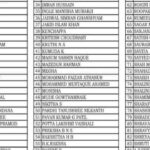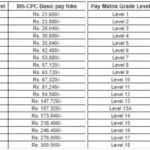Delhi Metro: हादसे में एक यात्री ट्रैक पर उतरा, गलती से प्लेटफ़ॉर्म से दूसरे पर जा रहा था। इसके दौरान ट्रेन आई और उसे ट्रैक पर फंसा दिया गया। यात्री की सुरक्षा के लिए त्वरित कदम उठाए जा रहे हैं।
सोशल मीडिया पर एक युवक का वीडियो वायरल हुआ, जिसमें वह मेट्रो ट्रेन और ट्रैक के बीच फंसा हुआ दिख रहा है। वीडियो में कर्मचारी उसे बाहर निकालने की कोशिश कर रहे हैं। इस हादसे का वीडियो दिल्ली मेट्रो ने 12 नवंबर को शेयर किया है। युवक की बचाव में कर्मचारी संघर्षरत हैं जब उन्हें उसे बाहर निकालने का काम करना है।
इस घटना ने सोशल मीडिया पर बवाल मचाया और लोगों ने यह वीडियो व्यापक रूप से शेयर किया। घटना में युवक को सुरक्षित रूप से बाहर निकाला गया है, इसके बारे में जानकारी दी गई है। दिल्ली मेट्रो ने उपयोगकर्ताओं से सतर्क रहने और सुरक्षितता के प्रमाणपत्र का पालन करने का आग्रह किया है।
गलत तरीके से एक प्लेटफॉर्म से दूसरे पर जाने की कोशिश
हादसे के समय एक यात्री ट्रैक पर उतरकर गलती से प्लेटफॉर्म बदलने की कोशिश कर रहा था। ट्रेन ने उसे ट्रैक पर फंसा दिया। ऑपरेटर ने तत्काल ब्रेक लगाकर ट्रेन को रोका। यात्री को अम्स ट्रामा सेंटर भेजा गया इलाज के लिए।
- दिल्ली मेट्रो ने बताया कि नवंबर में ऐसी कोई घटना नहीं हुई है।
- डीसीपी राम गोपाल ने यह खबर अपुष्ठ और गलत बताई है।
- उन्होंने कहा कि मुझे कई संबंधित कॉल मिले हैं।
- इस वीडियो से संबंधित कोई मामला दर्ज नहीं है।
- मेट्रो डीसीपी के मुताबिक, यह बहुत पुराना हो सकता है या कहीं और हो सकता है।
- हाल में दिल्ली में ऐसी कोई घटना नहीं हुई है, उनका कहना है।
- उनकी ओर से यह आपत्तिजनक समाप्त हो गई है,
- वह सच्चाई का आदान-प्रदान करते हैं।
- दिल्ली मेट्रो ने घटना की पड़ताल करते हुए यह स्पष्ट किया है कि कोई ऐसी घटना नहीं हुई है।
मेट्रो और रेलवे स्टेशनों की यात्रा करने का आग्रह किया है
- राम गोपाल नाइक ने यात्री से सतर्कता के साथ मेट्रो और रेलवे स्टेशनों की यात्रा करने का आग्रह किया है।
- उन्होंने कहा कि गलती नहीं करनी चाहिए, क्योंकि यह दुर्घटनाएं बढ़ा सकती हैं।
- सतर्कता बढ़ाने के लिए यात्री को अपने आप को जागरूक रखना चाहिए।
- रेलवे की पटरी पर चढ़ते समय और उतरते समय हमेशा सतर्क रहना चाहिए।
- वीडियो ने सतर्कता की जरूरत को उजागर किया है और यात्री को सुरक्षित रखने का सुझाव दिया है।
- सभी को यह सुनिश्चित करना चाहिए कि यात्रा में सुरक्षितता का पूरा ध्यान रखा जाए।
सोशल मीडिया पर रोज़ दिल्ली मेट्रो के अंदर के वीडियो वायरल होते हैं। वहां युवक बैठकर अश्लीलता करते हुए दिखता है। एक वीडियो में एक युवती बिकिनी में ट्रेवल करती है। कई अन्य वीडियो भी हुए हैं जिनमें कोच में कपल अश्लीलता करते हुए दिखे।
| Whatsapp Channel | Join |
| Telegram Channel | Click Here |
| Homepage | Click Here |








